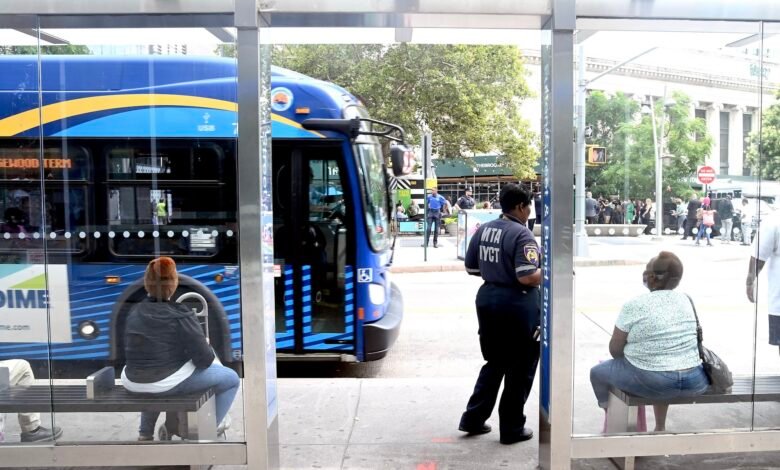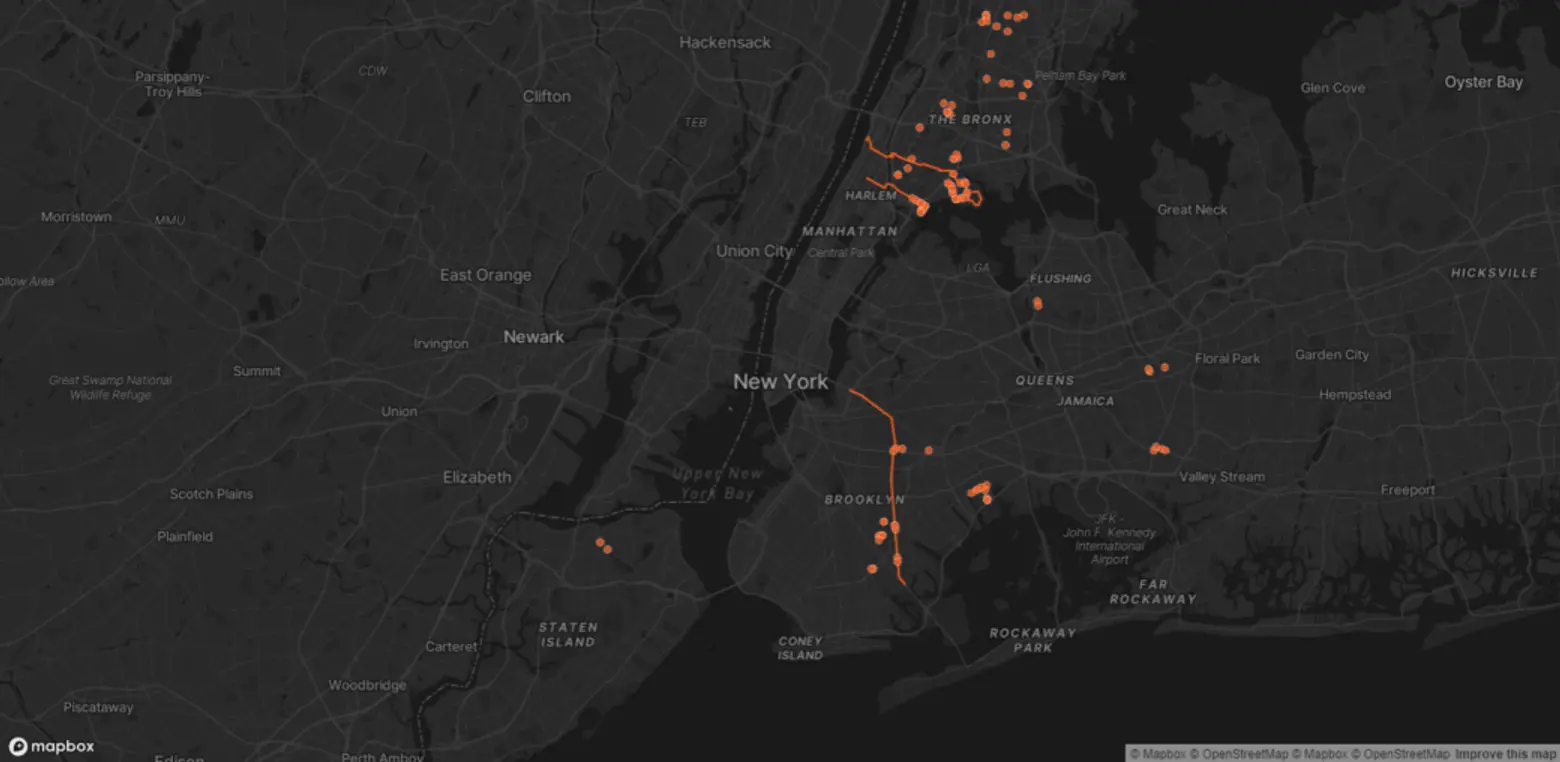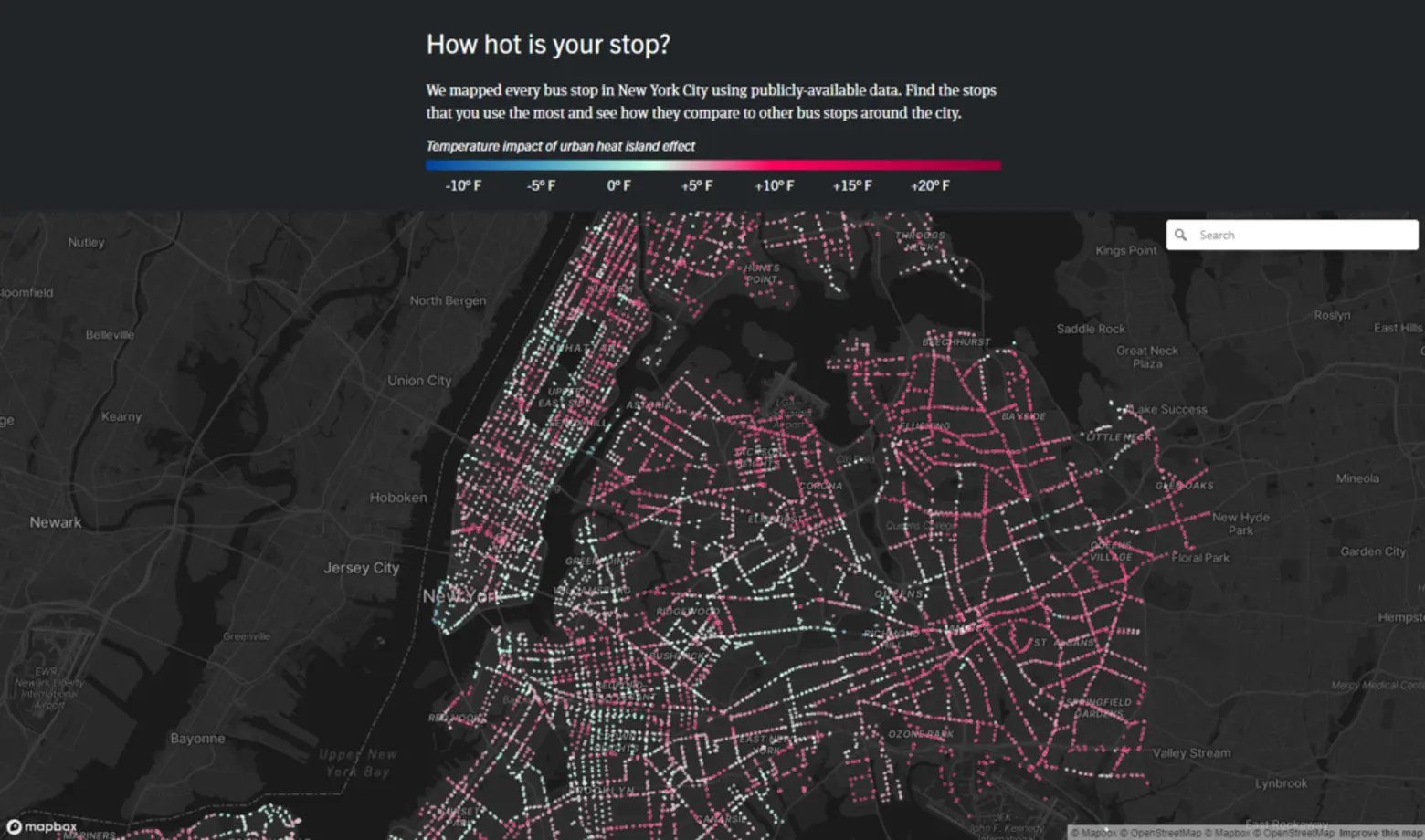

A bus shelter on Fulton Street in Brooklyn. Marc A. Hermann / MTA on Flickr
New York City’s hottest bus stops are 14.5 degrees hotter than its coolest stops, with most of the sweltering stations found in low-income neighborhoods of color, according to a new report. Transportation Alternatives (TA) collaborated with NASA to analyze summer daytime temperatures at city bus stops using thermal heat imaging satellites. The study found that bus riders in Black, Latino, Asian, and high-poverty communities, particularly in Queens and the Bronx, experienced the warmest waits. The report identified 100 bus stops and three routes in need of intervention and recommended ways to cool them down.

TA and the NASA DEVELOP Environmental Justice team identified 100 priority bus stops based on five characteristics: excessive heat, poor bus service, few or no alternative transit options, no bus shelters, and predominately serving New Yorkers who rely on the bus or are low-income New Yorkers, Black, or senior citizens.
All of the stops lacked shelters and 64 percent had no trees within 25 feet to provide shade. Additionally, fewer alternative transit options were available within a five-minute walk of these stops, and the average bus speed on the routes serving them was nearly one mile per hour slower than the MTA’s overall average, according to the report.
In contrast, the city’s coolest stops featured bus shelters, tree coverage, green spaces, and nearby bodies of water. Nearly twice as many white residents lived near these coolest stops compared to the hottest ones, even though the total number of residents living near both the hottest and coolest stops was roughly the same.
According to the report, people living within a quarter-mile of the city’s 400 hottest stops are 56 percent more likely to be Latino, 24 percent more likely to be Black, and 40 percent more likely to be non-white than residents living within a quarter-mile of the coolest stops.
Half of the hottest stops are located in City Council districts 12, 19, 20, 21, 22, and 26, where residents are 96 percent more likely to be Asian compared to the average district. Additionally, New Yorkers living within a quarter-mile of these hot stops are 62 percent more likely to be below the federal poverty line than those living the same distance from the coolest stops.
The seven hottest stops are located in the Bronx, averaging temperatures 11 degrees warmer than the city average, and 20 degrees warmer than the coolest stops. The borough is home to only 12 percent of the city’s bus stops, but it possesses 27 percent of the city’s hottest stops.
More than half of the hottest stops are in Queens, and 67 percent of the borough’s stops are hotter than the citywide average.
Residents living within a quarter-mile of the hottest bus stops are 34 percent more likely to commute by bus than those near the coolest stops. Bronx residents, who rely on buses more than those in any other borough, are particularly at risk, with every three out of four stops in the borough being hotter than the city average.

In the report, TA recommended that the city prioritize installing bus shelters, street trees, and greenspaces at the identified stops, as well as bus improvements to shorten wait times and improve the waiting experience.
Specifically, to keep New Yorkers safe as they wait for the bus, TA recommends:
- By 2025, install bus shelters with seating, countdown clocks, and street trees at all high-priority stops. To reclaim parking spaces and create “bus bulb-outs” with room for bus shelters.
- By 2025, convert priority bus routes into express car-free busways or red-painted, barrier-protected, and camera-enforced lanes. Additionally, expand transit-priority signaling to high-priority bus routes to reduce wait times.
- Pilot new stop designs built for natural cooling, solar panels to power countdown clocks and fans, green roofs, and other cooling technologies.
- Maintain rush-hour service all day on priority routes during days of extreme heat.
- Call on the DOT to create an action plan to install bus shelters with seating and countdown clocks at every NYC stop by 2035, prioritized by demographics, wait times, excessive heat, transit access, and local residents’ heat vulnerability.
- Require the DOT to release a public dashboard of bus shelter installation to track progress towards complete integration.
Curious about where your local bus stop ranks among the city’s hottest? Transportation Alternatives has created an interactive map that allows New Yorkers to find and compare the stops they frequent with others across NYC.
RELATED:




